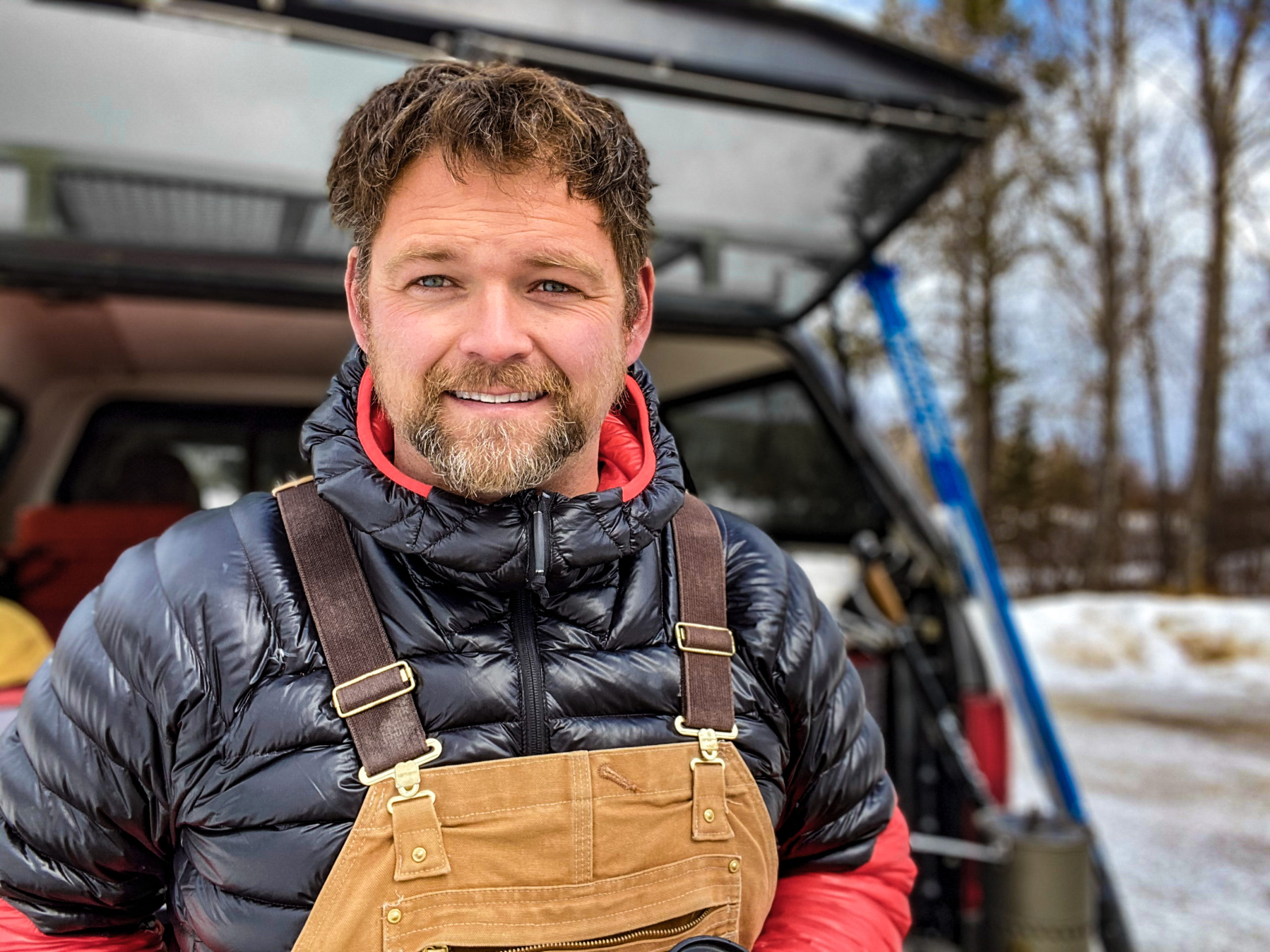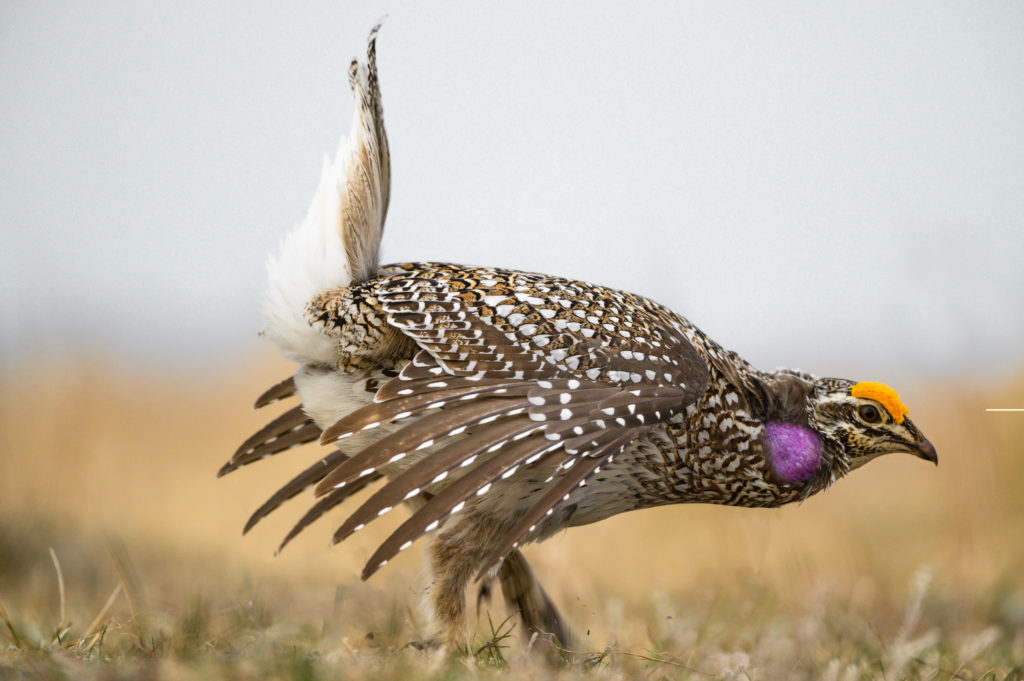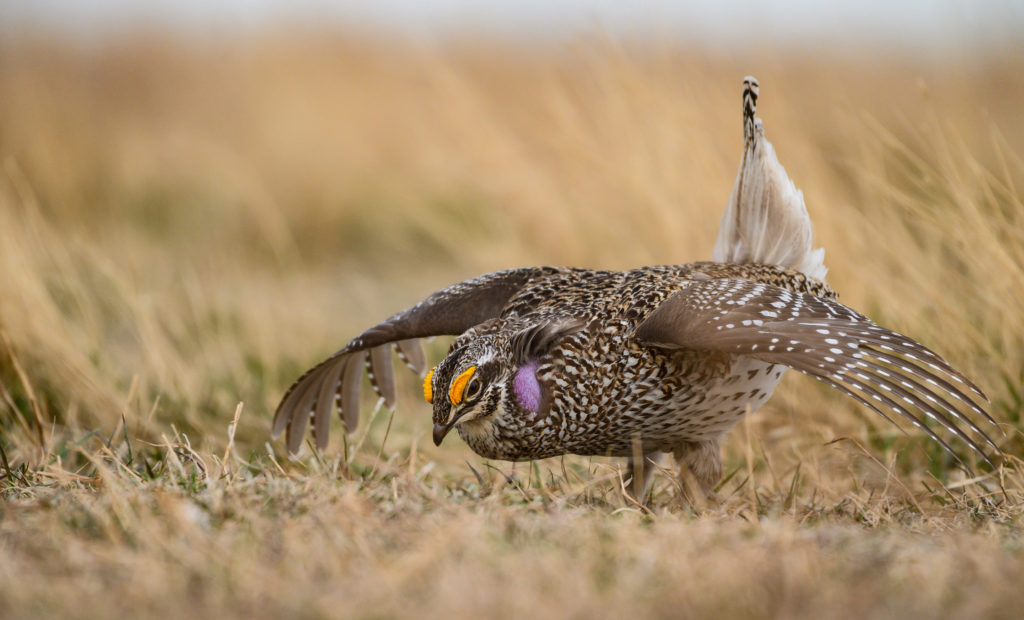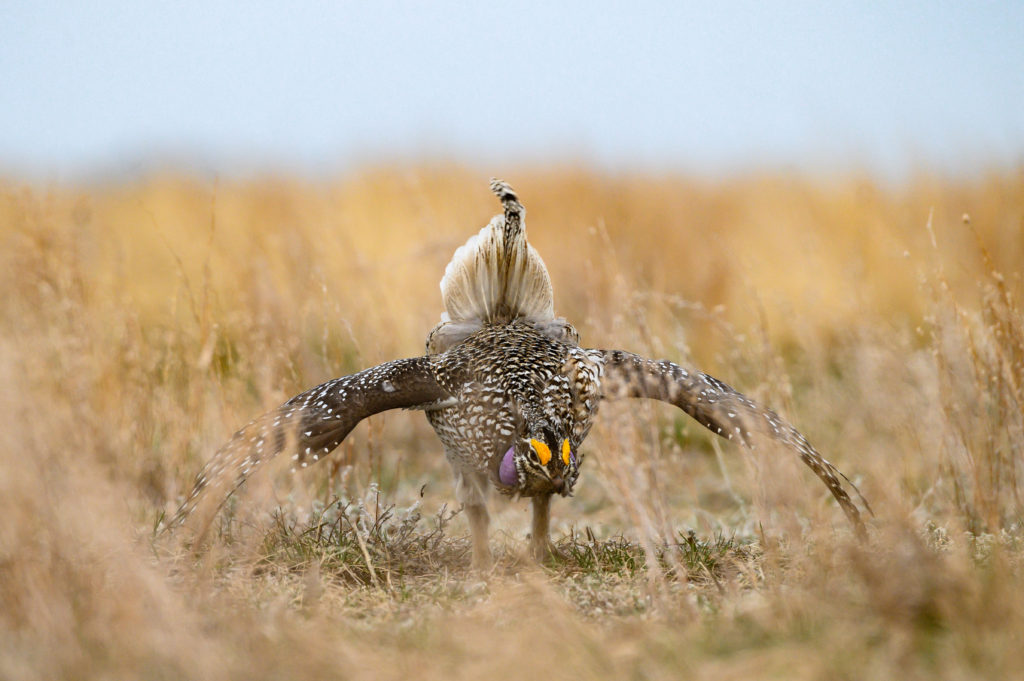Community Feature: Jimmy MacDonald

Springtime is typically a pretty busy season for me. Along with shifting gears from an austral summer of guiding wildlife viewing expeditions in Antarctica to preparing for a summer of canoeing and kayak expeditions in Northern Saskatchewan, I also find myself bogged down with the typical yard work and spring cleaning. A silver lining for me has been a delayed start to summer in Saskatchewan (with the COVID-19 virus halting my work schedule) allowing me some much-needed alone time to immerse myself in the nature that is right here in my own backyard.

On this particular April morning, I found myself sipping coffee trying to keep my toes warm laying in the shortgrass prairie just outside of Saskatoon in below-freezing temperatures. It was half an hour before sunrise and my objective was to catch a glimpse of our provincial bird – the Sharp-tailed Grouse– at one of the spring mating grounds (also called a lek). It was funny for me to consider, laying here at 04:50am waiting for the bobbing heads and vibrating tails of these elusive and typically flighty birds, how many people have never witnessed what I was about to be immersed in. Nor have most people even ever seen one of our provincial birds in the wild. As I tried to keep my legs from rustling in the frost coated grass, I began regretting my choices that morning. Did I intentionally deprive myself of sleep on a wild-grouse-chase? The signs had been there the days before, a few tufts of feathers, trampled down and torn up vegetation as if a lawn mower had gone over it, but it was lacking any fresh scat.



Then the familiar sounds began, all around me. The grouse were returning to their lek, one by one, out of the perimeter. Totally disregarding my presence as a large shadow wafting strange, rich aromas from my coffee flask, only a few meters away. A grouse can make a cacophony of buzzing, clucking, and deeper hollow thumps. The most pleasing sound that morning was the buzzing or hum of the vibrating tail feathers as the male grouse strutted around staking out their territory and asserting some level of dominance over the younger newcomers.
Eventually the Sharp-tailed Grouse finished their daily display and the males finally noticed that the females were uninterested, and long gone. A peaceful start to my day, with no one around, no noise from the civilization. A blessing in disguise as everything has been slowed down lately. What came into my mind that morning was how lucky I was to have this intact grassland not far from my front door, easily accessible and enjoyable for observing nature and wildlife without causing any stress.
Preservation of habitat was responsible for the success of my day. Sharp-tail Grouse populations have been documented to be declining in the last decade. It is cited that habitat loss and subsequent harsher winter conditions may be to blame. Perhaps this healthy lek with over 50 male grouse performing their mating displays is indicative of an upswing on the graph.
In Saskatoon, and Saskatchewan, we take for granted a lot about nature. In my short span of observing wildlife and the environments I work and play in I have noticed changes. Some changes positive, some negative. Wilderness and wildlife are everywhere around us, we do not have to venture far from our homes. One thing I feel that is taken for granted is not just our parks and ecological reserves/preserves, but also other habitat lands that are undeveloped and maintained in a natural state of wild. We are lucky for the protection of this habitat, and the species that live there, whether for the purposes of maintaining a healthy ecosystem or simply our own selfish pleasure being able to immerse in nature.



Closer to home, we have the opportunity to identify and protect some precious habitat, literally right in our own backyard. The Northeast Swale, a Meewasin Valley project, is teeming with wildlife in what is still a reasonably undisturbed natural prairie ecosystem. With further expansion, there is a threat that this beautiful little enclave of nature will be detached from the surrounding environment and become dysfunctional. Each morning the Sharp-tail Grouse gather at a lek nearby the swale but it is nothing like what I experienced out in a healthy prairie environment. With dismal numbers, and constant disturbance and pollution from nearby construction, roads, and housing developments, the grouse are skittish and uncomfortable at best in their situation. From what I understand, the population here has been monitored over the years, and hopefully it manages to withstand the pressures of our urban sprawl. In an ideal world, we would identify the resource we have here as intrinsically special so that we can preserve what is already a unique natural environment so close and accessible to enjoy.
Spring is in the air, and for the wildlife going about their routines, there are much more important things to keep busy with then the distraction of a few pesky humans sitting quietly and enjoying their presence. I hope that in this coming season we all take a little more time to acknowledge and enjoy the nature we have so readily available. Let’s not take it for granted, like a species of bird that is part of our provincial identity, yet unknown to most of us.
Get out and responsibly enjoy some fresh air, and maintain that physical distance from the busy wildlife, but also other people right now 🙂
Jimmy
You can read more about Jimmy and find his social media here.
